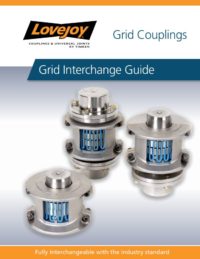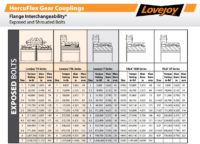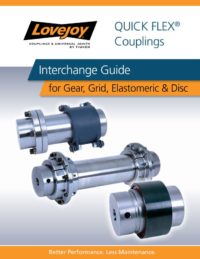Coupling Interchanges – Should You Mix And Match Different Manufacturers?
Are flexible coupling components really interchangeable between manufacturers? Can you? Should you? What if there is a delivery time or price advantage? What is the impact? Given utility and design patents for most major coupling types expired decades ago… this is a common re-occurring question… raised between end users & distributors and distributors & manufacturers alike. Of course, the answer is… it really depends. Let’s dive into exactly why…
Component for Component Swaps
Some coupling manufacturers will tell you that their components are fully interchangeable. To cite a specific example, Lovejoy and several of Lovejoy competitors will tell you that their S-Flex Endurance™ hubs (or their name for an S-Flex Endurance) and elements are fully interchangeable with each other. In this case, it means that these companies have standardized to common dimensions and the components will fit with each other.
While components may be dimensionally interchangeable, it certainly does not mean their quality is equivalent. Take the S-Flex Endurance again, which has two hubs and an elastomeric insert. The elastomeric insert of Lovejoy and a competitor may be the same dimensions, but not of the same quality. System torque is being carried across the coupling in shear and if the quality of the element is not there, the coupling will fail prematurely. Similarly, take the hubs. If they are dimensionally the same, that’s a great start. You also need to consider the concentrically of the bore, the bore & keyway tolerance, and the set screw threading.
So while quality may be different, what types of couplings are component for component dimensionally interchangeable? This question is best answered by the specific manufacturer(s) in question, but Lovejoy will tell you that it is interchangeable with specific manufacturers of S-Flex Endurance products, motion control, jaw and curved jaw (inclusive of SPIDEX®, a popular European coupling brand Lovejoy owns), grid, torsional, and disc couplings.
View Interchange information for Grid Couplings in this: Grid Interchange Guide 
Big picture, interchangeable components are great in that they provide end users flexibility between manufacturers (particularly valuable in a line down or emergency breakdown situation), but interchangeability does not mean equivalent quality, life, durability, reliability, or even performance (max torque, misalignment, etc.) characteristics. Manufacturers will generally be much less willing (or not willing at all) to stand behind or warranty a mixed manufacturer coupling solution. As such, it is always important to evaluate and understand both the quality of and the support behind the product you are getting… even if they appear to be dimensionally equivalent.
Coupling Half for Coupling Half
The most common coupling known for its ability to be swapped half-for-half is the AGMA compliant flanged gear coupling. A flanged gear coupling is comprised of 5 major components: 2 hubs (that attach to each shaft), 2 flanges (that fit over the hubs), and a bolt kit that attaches the two flanges together (FYI: Flexibility in gear couplings is achieved between the interlocking teeth of each hub & sleeve pair).
Lovejoy, like many other manufacturers, both adheres to and helps maintain a common standard (AGMA 9008-B00: Flexible Couplings — Gear Type — Flange Dimensions, Inch Series), specific to this type of coupling which defines common flange dimensions and bolt patterns for small to mid-sized gear couplings (Really large gear couplings can get a bit wacky, so make sure you consult with the manufacturer(s) in question). This standard DOES NOT however define or provide for coupling hubs and flanges to be interchanged on the same side of the coupling between manufacturers as the gears between manufacturers can be and generally ARE different.
View Interchange information for Gear Couplings on pages 12 and 13 in this: HercuFlex Catalog
Similar to component for component swaps with other coupling types, half for half compatibility does not equate to equivalent quality, life, durability, or reliability. Different manufacturers use different materials, grades of materials, manufacturing processes, gearing designs… and, as a result, do have different ratings and performance characteristics.
Full Coupling for Full Coupling
Unlike the above to partial swaps, full coupling switch-out are much less risky at least from the manufacturer’s perspective because the number of variables are limited and troubleshooting becomes much less difficult. Coupling technology and optimization has improved dramatically over the past several decades (such as the scalloped design in disc couplings which can handle increase misalignment) and it often makes sense to try a new design or new innovation (like switching out a gear coupling application to a QUICK FLEX® or disc coupling application) but that doesn’t mean a switch-out is without risk.
View Substitution options in this: QUICK FLEX Interchange Guide for Gear, Grid, Elastomeric, and Disc Couplings 
Risks can be greatly minimized however by ensuring the new coupling is as well suited for your application as you believe (we, naturally, recommend you speak with the coupling supplier’s applications team) and comes from a manufacturer you trust & respect. Lastly, do not forget to ensure the power transmission system is properly aligned/realigned within acceptable tolerances when the new coupling is installed.
Contact Lovejoy Application Engineering with your interchange and substitution questions.

